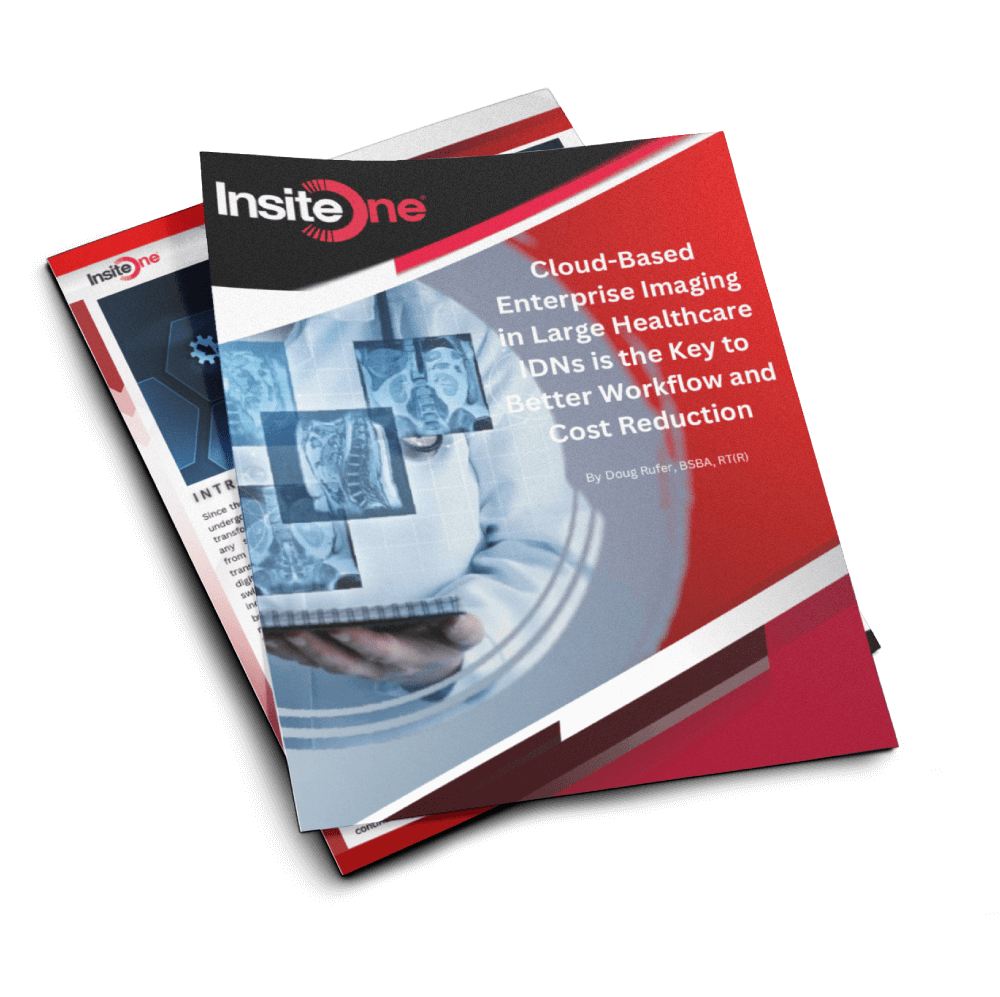6 Considerations Before Monetizing Imaging Data

Introduction
Let’s face it, we live in an era where data explodes around us daily. In fact, we estimate that 328.77 million terabytes of data is generated daily. Considering radiology annually generates over 74 million CT studies and 275 million conventional radiology procedures (and that’s not counting the other modalities), a considerable amount of imaging data is stored across many on-premises and cloud archives across the US. However, beyond storing data for medical-legal purposes, what else can we do with all that data? Data has value and maybe you are considering methods to monetize your imaging data.
Healthcare organizations know their data (not just imaging data, but EHR, radiomics, genomic, and pathology data) provides significant value in clinical research and training Artificial Intelligence (AI) algorithms. Some organizations sell their de-identified data as a new revenue source, while others choose to “wait-and-see” as they explore ethical and patient data security concerns.
According to Gartner, Data Monetization is defined as the process of using data to obtain quantifiable economic benefit. Data monetization is turning data into an economic asset to maximize efficiency, reduce costs, and increase business value. To obtain organizational benefits while contributing to the advancement of medicine, how should one prepare their data for research, and what are the associated risks?
Data monetization is a lengthy topic that deserves a much more in-depth white paper. But in this month’s blog, we explore 6 considerations you should take before monetizing your imaging data. Look for InsiteOne tips as read this blog and learn about a few of the factors that will impact your ability to maximize the data you choose to sell while providing optimal value.
Data Monetization Factor #1: Establish and define your business objectives to monetize data.
Before embarking on any new business venture, you need a sound business strategy. You should decide if 1) this will be a one-time sale, 2) you will establish an on-going subscription-based service, or 3) you are looking for collaborative research partnerships. These questions help shape the framework of how to market your data services to potential buyers. After deciding if this is a one-time venture or an on-going service, determine how much data you have available (in other words, are your data sets large enough to sell). Finally, understand where your data comes from, who “owns” that data (is it yours or does it come from a 3rd party source you do not own), and do you have the proper legal contracts in place to give you the right to sell that data.
InsiteOne Tip
Developing your business strategy marks the initial and significant first step toward monetizing your data. Defining what you want to achieve is just as important. While a clearly defined business strategy offers a roadmap for maximizing the impact of the data you sell, understanding the nature and volume of the data you have available is equally crucial.
Be sure to consider the value of the data your organization generates. With a clear understanding of your data, be sure to study how other organizations that have achieved success in selling similar data sets, then take advantage established best practices and watch out for known pitfalls. Finally, consider that your organization and the data they produce is not static. Your data production will evolve over time. Incorporate long-term strategies focusing on growth and watch for new opportunities as you evolve in your data monetization initiatives.
Data Monetization Factor #2: Establish robust data capture, governance, and standardization policies.
The value of data by itself is not worth as much as data that provides key insights or unique trends. Data enriched with metadata (information about the data you have) provides more value to the data you are selling. Complete data is better than incomplete data, and data that provides insight into something new, amplifies the value of your data. To ensure your data is robust, establish early on specific capture, governance, and standardization protocols and priorities. Standardizing and de-identifying your data is necessary for analysis (how data is organized and formatted). Governance is the collection of processes, policies, roles, metrics, and standards that ensures an effective and efficient use of the information you are capturing. Ensuring data is not missing and the metadata is accurate is just as important.
InsiteOne Tip
Enriching your imaging data provides the most value. DICOM fields are complete and accurate is the most important first step. Providing EHR data further fills any gaps about a patient’s history not evident from the imaging data alone. Longitudinal patient imaging records enriched with EHR clinical data and key information from imaging reports is far superior to images alone. Adding additional relevant information such as radiomics, pathology images, drug therapy and treatment data further enhances the value of your data. Make sure duplicated data is removed, it’s free of statistical noise, and it’s de-identified (patient health information removed) to conform with HIPAA and legal guidelines.
Data Monetization Factor #3: Pay attention to data privacy and security.
Data privacy and security are extremely important when preparing your data for sale. You must implement robust encryption techniques, access controls, and anonymization methodologies to protect sensitive patient and confidential information. Conduct regular audits and assessments to ensure compliance with regulatory requirements and industry best practices. Ensure data collection happens in adherence to existing compliance requirements, such as the Health Insurance Portability and Accountability Act of 1996 (HIPAA) and the General Data Protection Regulation (GDPR) in the EU.
InsiteOne Tip
The last thing any healthcare organization wants is a data breach. This impacts partner and patient trust and exposes your organization to significant penalties or lawsuits. Data privacy and liability concerns deserve the attention of CIOs, CISOs, and legal teams from the outset. Legal teams should scrutinize and revise end-user license agreements (EULAs) and privacy policies concerning the data that will be available for monetization. They also need to negotiate rights to reformulate and redistribute data if your product is packaged with other companies’ data and they need to understand downstream customer agreements for data usage.
Data Monetization Factor #4: Ensure leadership support and alignment from the beginning.
Data monetization efforts should start from the top of your organization. Developing the strategy, educating key stakeholders to the importance and value of selling your data, as well as the potential revenue streams that can be realized, needs top-line executive support. Imaging and clinical data is generated by multiple departments, so establishing cross-team collaboration is essential and often needs to be driven from the top down. Collaboration across teams can prompt new ideas for data sharing, potential new revenue streams, or new services that could provide a competitive advantage. Understanding organizational goals as it relates to data monetization ensures everyone is on the same page.
InsiteOne Tip
Developing a culture where everyone is aligned with the same goals improves data monetization success. If you are looking to advance outcomes for specific diseases and you have quality data to support research in that area, it needs to be communicated often and well. If you want to offer new service lines, your teams need to understand those goals as well. Data monetization provides both direct and indirect pathways as you continue to explore its benefits. From his book Informatics, Douglas Laney identifies the 11 most common paths for data monetization, and these should be evaluated by your cross functional teams:
- Increasing customer acquisition/retention
- Creating a supplemental revenue stream
- Introducing a new line of business
- Entering new markets
- Enabling competitive differentiation
- Bartering for goods and services
- Bartering for favorable terms and conditions, and improved relationships
- Defraying the costs of information management and analytics
- Reducing maintenance costs, cost overruns, and delays
- Identifying and reducing fraud and risk
- Improving citizen well-being
Data Monetization Factor #5: Be open to new opportunities.
Sometimes, new opportunities present themselves where you least expect. The ability for data to provide value is exponential and many opportunities may not be immediately known to you or your team. Your data monetization team must be open to and looking for any new opportunities that could arise at any time. Be sure you monitor what your competition is doing and stay close to and informed about what is evolving in the healthcare industry.
InsiteOne Tip
You may start your journey by selling a subset of your data as a one-time sale, but along the way, you change course to provide your data as a service to increase opportunities and revenue streams. Although the practice of analyzing and selling data is not a new economic commodity, it is in its infancy stage within healthcare. Consider not only new revenue opportunities that may arise, but look for new partnerships, research collaboration projects, and community benefits your healthcare data monetization strategy may provide.
Data Monetization Factor #6: Consolidate and integrate.
Data spread across disparate storage silos creates a messy data house. Consolidating your imaging data into a common archive provides the best practice for rapid search when specific research parameters are requested. Integrating data with other clinical systems (like your EHR) is equally important to provide more value in the data you are storing. Aggregating all relevant data, including payer data, into a unified data silo speeds data analysis and improves your output. Don’t forget to ensure your data is complete, accurate, and standardized.
InsiteOne Tip
While storing all your data in a single infrastructure may not be possible, removing data silos is a great first step. Backing data up to the cloud provides global access to the data when needed. Integrating all imaging silos into a common infrastructure (a vendor neutral archive -VNA – or enterprise imaging platform), will save costs and improve access to your data in context to the patient’s clinical record. How you ultimately manage your data is every bit as important as who you choose to partner with as you begin your data consolidation and standardization efforts.
Companies like InsiteOne can help provide robust storage infrastructure tools to consolidate your imaging data. We also provide the expertise to help extract and identify the metadata that provides greater insight, plus the experience from helping our customers monetize their imaging data successfully.
Conclusion
Healthcare data monetization continues to evolve as the value it provides to improve workflows, identify new service lines, and open new revenue streams make it a worthwhile initiative. Yet navigating data monetization services is complex and organizations must do so with their eyes wide open. Driving a culture that thrives on collecting, aggregating, cleansing, and analyzing your generated data must be driven from the top down to succeed. Embracing this new frontier opens new opportunities for your organization to help advance medicine.
This blog does not cover every tip an organization must take as they evaluate their monetizing strategies, but we hope it provides some interesting resources, provoking thoughts and insight about the opportunities that can come from monetizing your data. Every organization should continue to explore if data monetization is the right choice to pursue either now or in the future.
There are many different approaches to take in a data monetization journey, but the factors that must be considered remains basically the same for all. InsiteOne has experience in assisting our customers monetize their data and we would be happy to engage in a conversation about your strategy, future needs, current roadblocks, and privacy concerns. If you want to learn more about how InsiteOne can help, be sure to contact us today to start a conversation! Finally, we’ve created a data monetization checklist which you can download here to help you get started on your journey!




